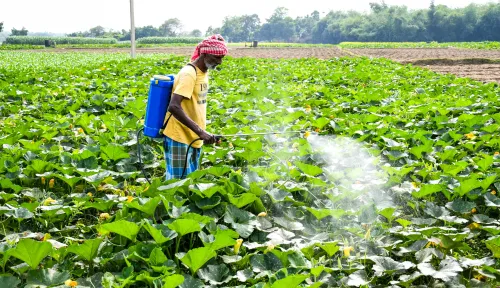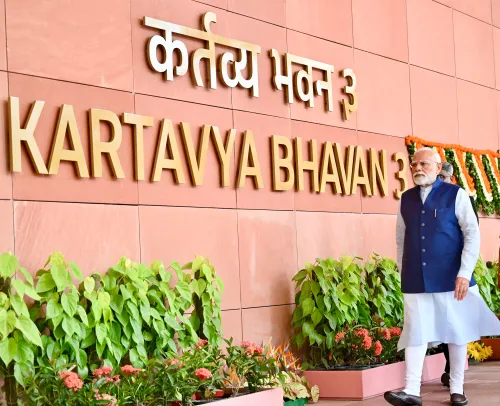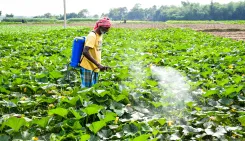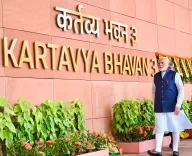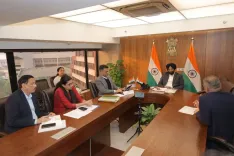How Did Students Across India Celebrate Mega Tinkering Day?
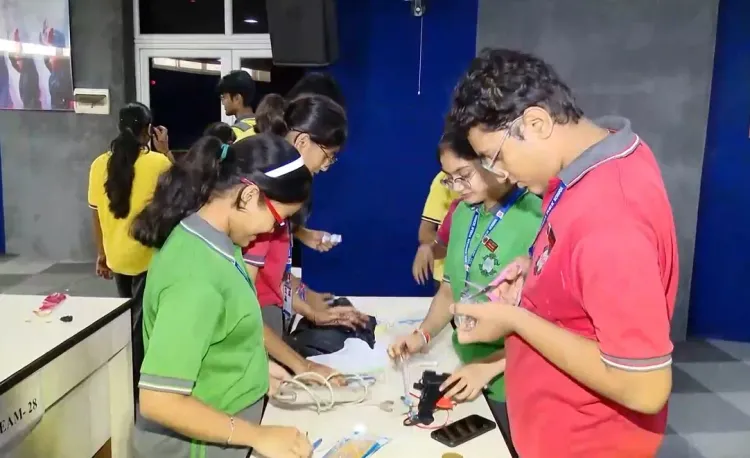
Synopsis
Key Takeaways
- Mega Tinkering Day promotes innovation among students.
- Hands-on projects enhance technical skills.
- Encourages teamwork and leadership.
- Aligns with the New Education Policy.
- Over 10,000 Atal Tinkering Labs participated.
New Delhi, Aug 12 (NationPress) Mega Tinkering Day was celebrated by students nationwide on Tuesday, with the goal of enhancing innovation, technical skills, and problem-solving abilities among learners. Students expressed excitement about mastering complex technical concepts through simplified and practical methods.
A special program took place at Bal Bhavan Public School, Mayur Vihar Phase-2, Delhi, as part of the nationwide celebrations.
In partnership with the Atal Tinkering Lab (ATL), the event allowed students to showcase their creativity and technical skills through various ‘do-it-yourself (DIY)’ projects.
Employing principles of science, technology, and engineering, students constructed numerous practical models, ranging from household appliances to eco-friendly solutions.
The initiative also promoted teamwork, leadership, and inventive thinking, which educators believe will equip students for future industries as per the New Education Policy.
Students recounted their experiences with IANS.
Naman Gupta, a Class 10 student, remarked, “This mega fest has broadened my knowledge. It should be held multiple times a year, as it has certainly elevated our thinking.”
Tisha Negi, another participant, added, “We learned how to repurpose waste materials into a DIY vacuum cleaner. This is an excellent initiative. Our problem-solving and critical thinking skills have improved significantly.”
Swati Poornanand, Vice Principal and PGT Biology, described the initiative as “a commendable step,” stating, “Activities like this will help students uncover their potential and utilize it effectively in the future.”
In Bharatpur, Rajasthan, children engaged in both hands-on and virtual sessions, where they received online demonstrations of project development and innovative techniques.
Teachers highlighted that such activities cultivate students’ technical and innovative skills, reshape their mindset, and encourage collaboration to tackle larger-scale challenges.
One instructor shared with IANS, “This initiative ignites a technical interest in children, boosts their confidence, enhances their knowledge, and undoubtedly contributes to nation-building.”
Ayan, a Class X student, remarked, “It provides a platform for children to unleash their creativity and apply their academic learning practically.”
Another student expressed, “Today, we were guided in building a vacuum cleaner ourselves. The practical aspect made a significant impact.”
According to NITI Aayog, Mega Tinkering Day 2025 marked the largest school-based tinkering event ever conducted in India. Over 10,000 Atal Tinkering Labs engaged more than 473,000 students from 9,467 ATL-equipped schools across 35 states and union territories to innovate and create collaboratively in real-time.
Hosted virtually by the Atal Innovation Mission (AIM), the event challenged students to design and construct a DIY vacuum cleaner using materials readily available in their school labs. The session was conducted through a step-by-step online instructional broadcast, enabling students from even the most remote areas to learn and collaborate in real time.
“Mega Tinkering Day 2025 is a landmark showcase of grassroots innovation,” said Deepak Bagla, Mission Director at Atal Innovation Mission, NITI Aayog.
“It aligns with the Prime Minister’s vision of Viksit Bharat, where innovation and youth are pivotal drivers of national transformation.”
He added, “During this live event, over 10,000 Atal Tinkering Labs united for an hour of creativity, with thousands of students across India innovating and learning together. No other nation has mobilized innovation on this scale within its educational framework.”
Students from every corner of the country participated, from the northernmost areas of Leh, Ladakh, Kargil, and Kashmir, to the most remote Aspirational Districts like Virudhunagar, as well as from the North-East states including Manipur, Mizoram, and Arunachal Pradesh, to the southern tip of Kanniyakumari and the western deserts of Bhuj and Kutch.


